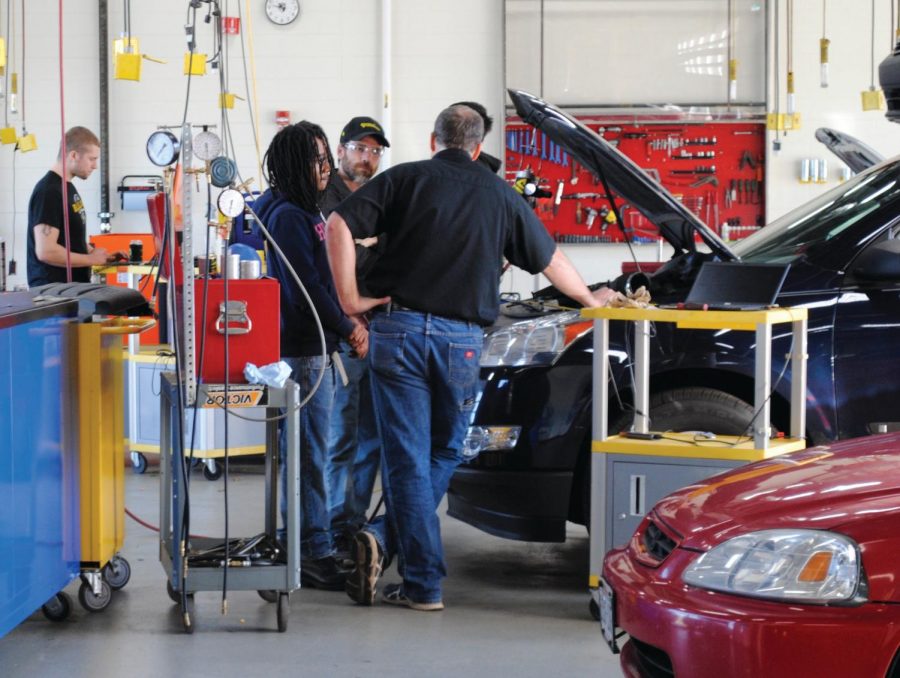Hands-on automotive experience
Students consult with instructors as they work on a vehicle inside one of the automotive bays at Truax.
October 24, 2017
While many have probably heard about the automotive technology program at Madison College, you may not have known that the students get hands on knowledge from working on their own cars.
Diagnosing and repairing these cars are a critical part of the student’s learning experience. Currently, about 110 students are actively seeking either a technical diploma as an Automotive Technician or an Associate’s degree in Automotive Technology.
With that many students, they often have to look beyond their own cars or their family member’s cars to practice on. Sometimes they will take on projects from faculty members or other students. They do not, however, take projects from the general public, as to not compete with the businesses that will be hiring graduates from the program.
There is a priority order for choosing the cars coming into the programs. First and foremost, the student’s who own vehicles get priority, along with their family and friends. Second, the opportunities for car a repair is then opened up for faculty members and all Madison College staff members. Third, occasionally student cars will be chosen explains automotive tech instructor, David Heinzen.
If you are interested in trying to get your car in for repairs, something important to know is there is no guarantee your car may be picked. It is not always first come first serve, as curriculum drives the choice for cars to repair. If a car were to be picked, the students generally won’t have your car for too many days, in some cases, allowing you to drive it daily depending on the types of repairs being performed.
The automotive tech instructors like to know that car owners have a vested interest in the program, or are committed to a valuable learning experience for students, not simply trying to get repairs done more economically.
If your car is chosen, instructors and students will do their best to give you a ballpark figure on costs. But there are no free estimates. Much of the work the students do is diagnosing, taking apart, testing and checking. The actual repairs take less time than the diagnosis for an estimate.
The program is mainly looking for cars with drivability issues. Hard starts or no starts, rough running, or cars with check engine or other indicator lights on. The students work in five different labs encompassing transmissions, engine/service repair, brakes/suspension, electronics/air conditioning, and powertrains. Cars with repairs in any of those specific areas could be good candidates.
Individuals who offer their cars to the program have the opportunity to save money on the car repair. Though the car owners are responsible for the cost of the parts needed to fix their cars, the student labor is performed free of charge.
Besides the cost savings, car owners can know that they’ve helped students gain valuable experience by working on cars, and that all of the work is overseen by certified instructors.































